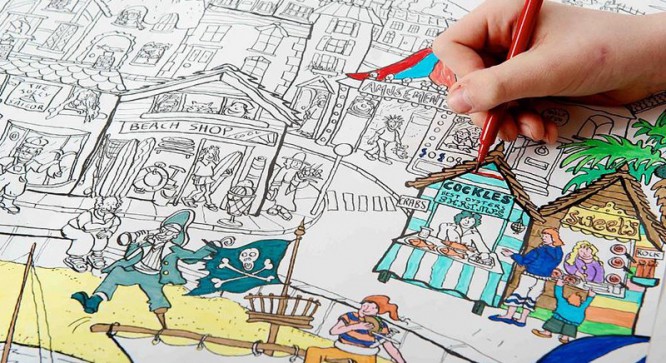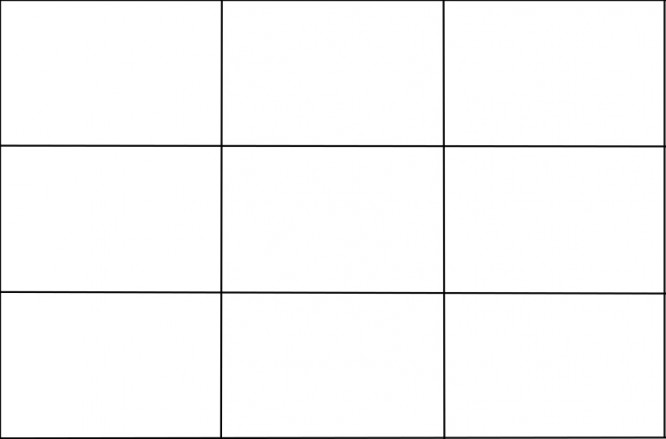4 proofs we became lazy designers
4 proofs we became lazy designers
Translation of the article “Are we becoming lazy as designers?” Ben Jones is a graphic designer for indie games studio Cheeky Devils.
With each round of technology development, solving any problem becomes simpler and easier. We do less and get more, but don’t you think that along with this we begin to forget the original purpose of our actions? Let’s take a look at Ben Jones, chief visual designer at Zoopla and game developer at Cheeky Devils.
The above statement is true for many areas of life – from daily routine to tasks that we have to solve at work. But Ben Jones’ field of activity is precisely design, and he has his own ideas about how workers in this area are exposed to the problem raised above. Let’s see what he thinks about this.

Herd instinct
More and more often, designers feel that they need to constantly comply with the latest trends and trends, but have you ever thought that this can be harmful to the design itself?
Apple and Google started out as technology leaders, but over time they have become those who set a new trend in design. Material design is a great example of a trend that has blown away as a result of a general misunderstanding of what Google put into it in the first place and where it was going. Considering that flat design already existed then, many thought that material design was the reincarnation of flat design, that is, in general, a redesign.
So many people tried to create this new design from an aesthetic point of view, placing elements a little differently and resorting to animation in new ways, and in the end they still got a flat design, only different. What Google actually did was create an interaction architecture that defined the purpose of using the interface itself. They took flat design and gave it a chance to exist.
We spend a lot of time on inspiring websites looking for examples of how someone else has already solved our problem. There are two problems we face when using these sites:
1. There is no real context for other people’s decisions that we find, because we see all this in a narrow format. We don’t see how this element compares to the rest of the project.
2. Getting used to the same sources of inspiration, we begin to look at everything the same way. Dribbble is a good example of this.
In this way, we become a flock of sheep. There is a danger that our design will be similar to the work of others. The way out of the situation is to absorb inspiration from all over the world and spread it outside your comfort zone so that the concept develops further. There is nothing wrong with using someone else’s work, no. But it works as long as we move on and create something unique from it. There’s nothing wrong with creating something new, so don’t be afraid to try new ways. Be a leader, not a sheep.
Good software means saved time … but for what?
Photoshop has long been known to everyone as the leader among design software, but despite this, a hole in the market opened and Sketch appeared. I am his big fan and protector. While implementing this program in my previous job, I realized how many advantages it has, especially when you are involved in development.
We realized we could work faster, and there was no more style guide, and the abundance of plugins made the design work even faster. This meant we had more time to do other things. For designers, it was like this:
1. Hey, bring us a new project! or
2. Oops, we can do more to improve the design!
As an artist, a designer must be able to stop. We are all a bit infected with obsessive-compulsive disorder and are constantly trying to find the right answers to questions. Sometimes the best option is to take a step back and just think, “Will this solve the problem at all?” It may not be the best solution, but it’s worth trying. Do it, test it, repeat it over and over. When the answer is “Yes!”, You can move on.
The danger in the eternal desire to finalize the design is the following: it is possible that what has already been done is the best solution and does not need to be changed. Are you going to spend the next few days on them?
There is also the possibility that as a result you will lose the original thought and forget the original concept. Then you say: “Eh, it should have been done differently.” This is an eternal struggle with prototypes. More and more people are using prototypes to test their ideas, but are we using this tool for the right purpose?
Prototype Wars
Over the past year, the number of new tools has grown to incredible proportions. They appeared almost every week, accompanied by an article where we were offered a comparison of the top 100 prototyping tools.
To designers, I will say this. Rather, prototyping was an excuse to add spice to our work. Designers share their crazy projects with the whole world, but in fact – how useful are they?
Prototyping is only beneficial when it comes to production. It helps bridge a developmental communication gap where we are unable to explain our intentions. At the same time, it is a great thing to present your idea to a wider audience, be it a client or a project team. A prototype you have developed is not considered useful if it is only made for this – for an idea. For this we have a pen and paper.
Before starting development, ask yourself a couple of questions:
1. Can I just explain it on my fingers?
2. If I cannot explain it “on my fingers”, maybe it is too complicated?
3. Does this prototype have a worthwhile purpose?
A good designer can answer such questions with ease. He engages all team members and, where possible, uses the input of the developers to speed up the resolution of issues with prototypes. You don’t need to prototype anything you come up with. You need to be able to stop in time, just using your team correctly.
Time to expand
If we fill our free time by expanding the task that is at hand, we only stop ourselves and keep from developing. By today, the title of designer has grown so much that such a position has appeared as Product Designer. In fact, there is only one way to become a better designer – to continue to understand why you are creating this design.
Remember, we have the chance to work closely with UX (user experience) and can influence it by working hand in hand. The more we work with UX, the more we move away from our comfort zone and thereby gain more knowledge about design as such.
When we are able to comprehend all this experience, we can see how our design works from all points of view, and, therefore, we can improve our projects.
Avoid wasting time with ideas that don’t move you further. The extra time allows us to look at our work with a fresh eye, and so, gradually developing, we are approaching the title of a leader.
Original: medium.com
Translation: dejurka.ru
…


